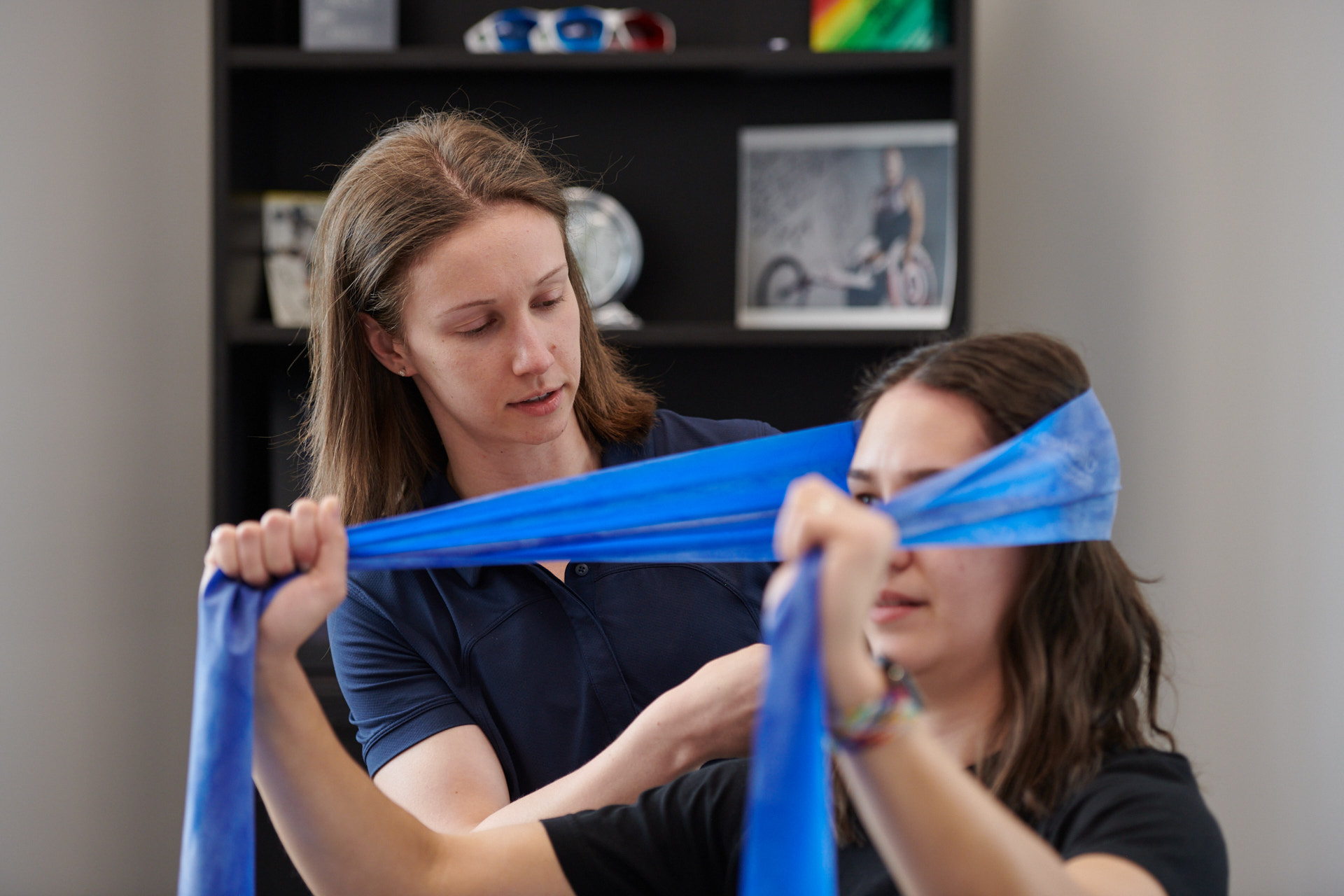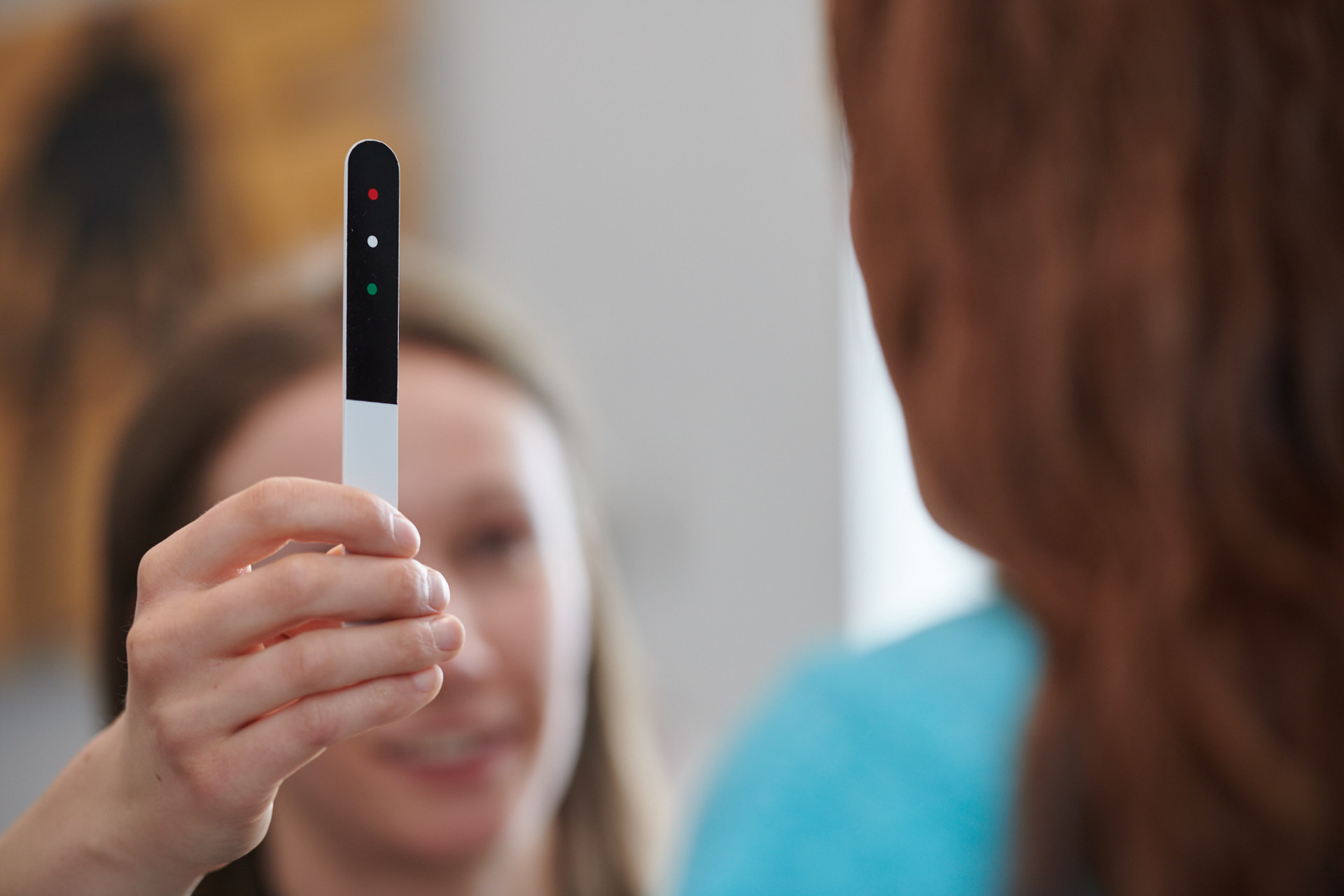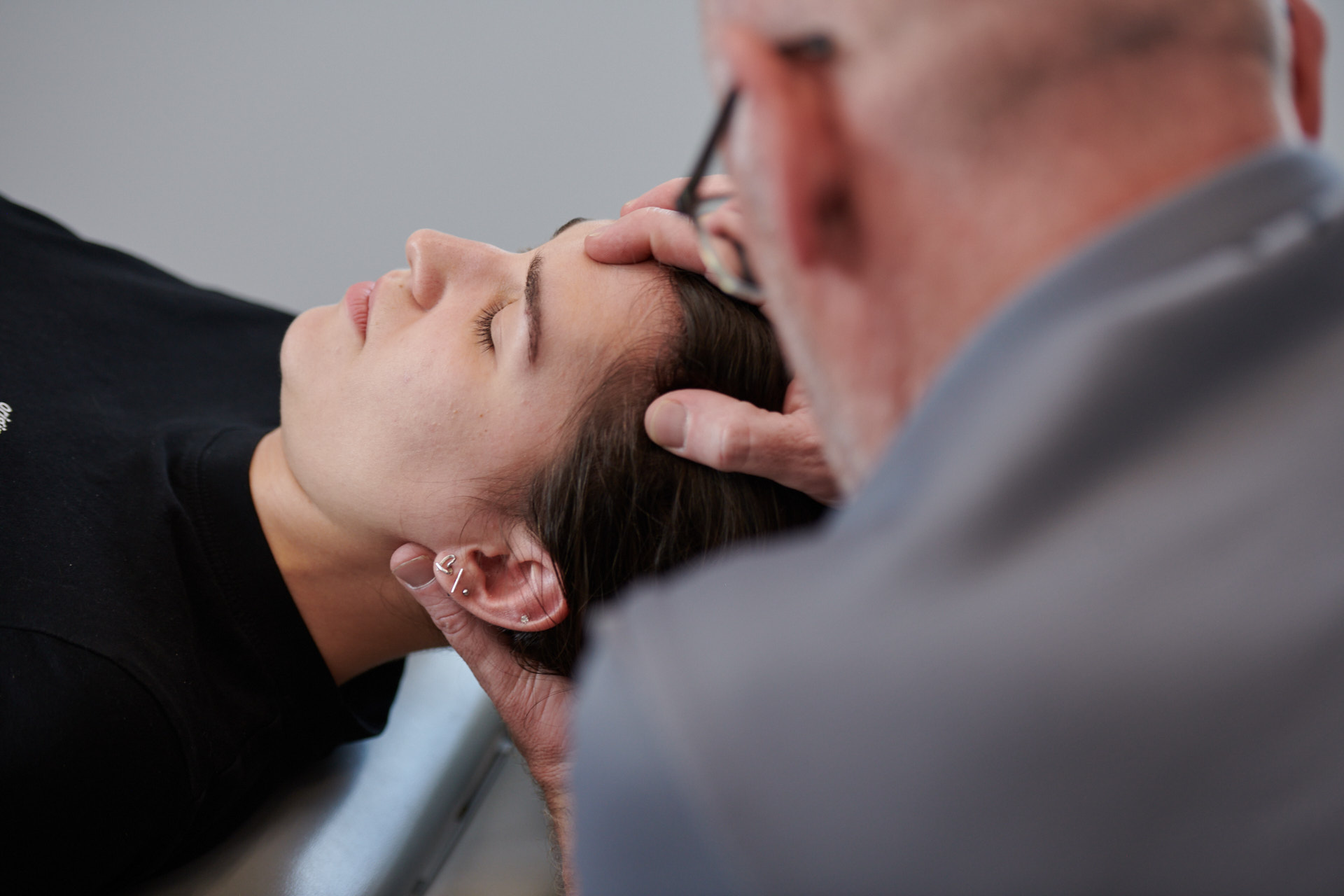Recovering from a concussion can feel like navigating a maze in the dark. You’re unsure of what to expect, how long it will take, and what steps to take next. Understanding the typical progression of a concussion, including the 4 stages of concussion recovery, can provide a roadmap for this often-confusing journey. This guide breaks down each stage, offering practical advice and resources to help you, your family, or those you care for manage the recovery process effectively. From the initial injury to the eventual return to normal activities, we’ll cover what to expect, potential challenges, and how to support healing every step of the way.
Key Takeaways
- Concussion recovery is a multi-stage process: Healing happens in phases, from the initial injury to resuming normal activities. Each stage has different needs, so understanding them is important for managing your recovery.
- Rest and monitoring are crucial: Prioritize both physical and mental rest, especially at the beginning. Pay close attention to your symptoms and adjust what you’re doing based on how you feel. Get medical advice if things get worse or don’t improve.
- Return to activity gradually: Don’t rush back into your normal routine. Slowly reintroduce activities, paying attention to your body’s limits. Patience is key for a full recovery.
What is Concussion Recovery? A Four-Stage Guide
Concussion recovery isn’t one-size-fits-all. It looks different for everyone and typically involves four stages. Understanding these stages helps patients, families, and caregivers better manage the recovery journey. This guide, based on years of experience treating concussions, provides practical advice and resources to support you through each step. For a helpful overview, check out our introductory audio guide on navigating concussion recovery.
Stage 1: Acute Injury (First 48 Hours)
This stage begins immediately after the injury. Common early symptoms may include headache, dizziness, light and noise sensitivity, fatigue and nausea. Prioritizing rest is crucial during this initial phase to allow the brain to heal. This means limiting activities that may significantly exacerbate symptoms, but does not mean sitting in a dark room. Activities to limit during this stage include intense physical exercise (though light physical activity is OK – like going for a walk), and activities requiring prolonged attention and concentration. Limiting screen use can be helpful during the first 48 hour period. Let symptoms be your guide. Learn more about immediate actions and strategies in our article on what to do after a concussion. Getting a prompt medical evaluation is essential to assess the severity and rule out other potential injuries.
Stage 2: Light Activity
After the initial acute phase, try gradually returning to light cognitive and physical activities. This may mean introducing some school work, or returning to screen time activities at home. Start with short duration intervals (15-mins at a time) and increase as tolerated. Don’t be concerned with small and brief symptom increases as you begin to increase activity levels. This is normal. If symptoms increase a lot, you may need to pull back on certain activities or increase the number of rest breaks between activities. This measured approach allows the brain to heal while gently reintroducing cognitive demands. For further insights into managing memory problems, read our article on decoding memory problems after concussion.
Stage 3: Concussion Recovery and Rehabilitation
For some individuals, tailored rehabilitation exercises prescribed and supervised by a healthcare professional trained in concussion management can help speed recovery. These exercises often focus on improving balance, coordination, exercise tolerance and cognitive performance. Therapy may address persistent symptoms like headaches, dizziness, neck pain or memory problems. If you are experiencing persistent difficulties with your mood, it is important that you speak with your doctor or healthcare provider as early as possible to receive the appropriate care.
Stage 4: Transitioning Back to Normal Activities
The final stage involves gradually returning to normal activities, including work, school, and social events. Resuming full activity should happen gradually, and under the guidance of a healthcare professional. It may be recommended that you resume school or work on a part-time basis to start, gradually increasing hours as tolerated. Your healthcare provider can offer you strategies for a successful return. Returning to full sport participation should only take place once all symptoms are resolved and medical clearance has been given. This transition requires patience and careful monitoring to prevent setbacks. For a personal perspective on this process, read this concussion recovery story.
Stage 1: Acute Injury – First 48 Hours
The first 48 hours after a suspected concussion are crucial. This period, the acute injury phase, sets the stage for your recovery. Swift action and careful observation are key. Here’s what to do immediately following a head injury:
Identify Initial Symptoms
A concussion affects everyone differently, but some common symptoms appear within the first few hours. These can include headaches, nausea, dizziness, strained vision, and sensitivity to light and noise. You might also experience balance problems and fatigue. Recognizing these early signs is the first step toward proper management. If you notice any of these after a head injury, even if they seem mild, consider it a potential concussion and proceed accordingly. For a deeper understanding of concussion symptoms, explore our resources on memory problems after a concussion.
Take Immediate Action
Rest is paramount during this acute phase. This means physical and mental rest. Avoid any strenuous activity, including sports, intense exercise, and prolonged or demanding cognitive tasks. Think of it as giving your brain a time out to heal. Light physical activity like going for a walk can be helpful in the early stages of recovery, but should not be too intense or cause your symptoms to increase significantly. Understanding the early steps after a concussion is vital for a smooth recovery. If you experience severe symptoms like loss of consciousness, repeated vomiting, or worsening headaches, seek immediate medical attention.
Screen Time
In the initial recovery phase, limiting screen time is important. Try to reduce your use of electronic devices, especially in the first one to two days after your concussion. This can help prevent symptoms from worsening. As you start feeling better, you can gradually reintroduce screen activities, but be sure to monitor your symptoms and take breaks when needed. Learn more about managing early symptoms in our article on early steps and strategies after a concussion.
Get a Medical Evaluation
Even if your symptoms seem minor, seeing a healthcare professional is essential. A qualified provider—like a doctor, or nurse practitioner—can assess your condition and rule out more serious injuries. They can also provide a formal diagnosis and personalized advice. Don’t rely on self-diagnosis. Early medical evaluation is the cornerstone of effective concussion management. For additional guidance on recovery, check out our introductory audio guide.
Stage 2: Light Activity
This stage focuses on finding the right balance between continued rest and the gradual reintroduction of cognitive and physical activities. It’s a critical period where you’ll begin easing back into a more regular routine, but with careful monitoring and adjustments.
Introduce Light Cognitive Tasks
As your brain continues to heal, you can start reintroducing light cognitive tasks. Think of this as a gentle warm-up for your brain. Start with activities that require minimal mental effort, such as reading a short article or engaging in a brief, simple conversation. You could also listen to a podcast about concussion recovery. As the University of Michigan Health explains in their guide, symptom improvement should progress to the point where you’re symptom-free at rest, initially with thinking activities, and later with physical exertion.
If any activity increases your symptoms significantly, you may need to pull back. As a general rule, symptoms should not increase above your baseline (where you started) by more than 2 points on a 10-point scale, and any symptom increase should settle down by about an hour after stopping the activity. Gradually increase the duration and complexity of these tasks as your symptoms allow. For example, after reading short articles, try reading a chapter of a book.
Gradually Return to Mild Physical Activity
Along with light cognitive tasks, you can gradually return to mild physical activity. While rest is crucial in the initial stages, emerging research suggests that limited exercise during recovery may actually speed up the healing process. Begin with short walks and slowly increase the intensity and duration as your body allows. Walking on a treadmill with a small incline or using a stationary bike for 20-30 minutes is a great way to get light exercise without provoking symptoms too much. Your healthcare provider can help assess your exercise tolerance levels and provide an exercise program specific to your needs. Be sure to avoid any strenuous activity or contact sports until cleared by your healthcare provider.
Stage 3: Concussion Recovery and Rehabilitation
By stage three, you’re likely past the initial acute phase of your concussion and working toward recovery and rehabilitation. This stage focuses on addressing any lingering symptoms and gradually returning to your normal activities. Targeted therapies and exercises play a significant role during this period.
Therapy for Persistent Symptoms
For some individuals after a concussion, certain symptoms may persist and require targeted treatment. These can range from headaches and dizziness to cognitive challenges like difficulty concentrating. Your healthcare team will create a personalized treatment plan to address your specific issues. This might include medication from your physician, vestibular therapy from a concussion-trained physiotherapist or chiropractor, or cognitive behavioral therapy from an occupational therapist or counselor for example. Healthcare providers trained in concussion care prioritize addressing individual symptoms, and the potential sources of those symptoms, during this phase. For additional support with memory challenges, read Conquering Memory Problems After a Head Injury.
Physical Rehabilitation
Physical rehabilitation often becomes a focus during this stage, especially if you’re experiencing balance issues, coordination problems, or difficulty with physical activity. A healthcare professional, such as a physiotherapist, will prescribe and supervise exercises tailored to your specific needs and recovery progress. The University of Michigan Health also emphasizes the importance of continued follow-up care at a specialized clinic for a personalized recovery plan, including prescribed exercises and referrals to other specialists. For practical advice on early steps after a concussion, review these strategies. For a personal perspective on concussion recovery, read this recovery story.
Mental Health Support
Mental health challenges, such as mood swings, anxiety, and depression, are common after a concussion and can significantly impact recovery and quality of life. These emotional symptoms often arise due to changes in brain function, stress from prolonged recovery, and adjustments to physical limitations. Individuals dealing with mood concerns after a concussion can greatly benefit from targeted therapies, including cognitive-behavioral therapy (CBT) and counseling. These therapeutic approaches provide coping strategies, help manage symptoms, and address the emotional complexities of concussion recovery, supporting individuals as they navigate their healing journey.
Stage 4: Transition to Normal Activities
This final stage of concussion recovery focuses on returning to your regular routine. It’s a significant milestone, but it’s crucial to approach it with caution and a well-considered plan.
Assess Readiness
Before resuming normal activities, honestly evaluate how you’re feeling, both physically and mentally. Consider whether you can handle daily tasks without worsening your symptoms significantly. This self-assessment involves checking in with yourself about lingering symptoms like headaches, dizziness, or difficulty concentrating. If you’re experiencing these, talk to your doctor before significantly increasing your activity levels. They can provide personalized guidance based on your specific situation and recovery progress. Resources like our audio guide on navigating concussion recovery can offer additional support.
Reintegrate Gradually
Don’t jump back into your usual routine all at once. Ease back into your normal activities gradually, starting with light tasks and slowly increasing the complexity and intensity. This measured approach helps you manage any lingering symptoms while getting back to your daily life. For example, it may be advisable to return to school or work in a part time capacity to start. Communicate with your school or employer about accommodations that could help support your return, such as more frequent breaks, a quiet work space that limits distractions, or staying away from busy spaces like cafeterias or boardroom meetings for a time. This gradual reintegration is key to preventing setbacks and ensuring a smooth transition. Our article on what to do after a concussion offers practical tips for managing this process.
Prevent Setbacks
Pay close attention to your symptoms as you reintroduce activities. If you notice a significant increase in symptoms, scale back your activity level and consult your healthcare provider. Open communication with your doctor is essential; they can adjust your recovery plan as needed. Avoid activities that could lead to another concussion or put excessive strain on your brain, such as contact sports and other high-risk activities. Remember, recovery isn’t a race. Prioritizing your health and well-being is paramount.
Lifestyle Adjustments During Recovery
Making simple lifestyle changes can significantly impact your concussion recovery. Think of these adjustments as supporting your brain’s natural healing process.
Nutrition and Hydration
Nourishing your body with a healthy diet is crucial for recovery. Focus on foods with anti-inflammatory properties, such as leafy greens, berries, and fatty fish. These foods can help reduce inflammation and support healing. Just as important is proper hydration. Aim to drink 60–80 ounces of water or non-caffeinated beverages daily and avoid alcohol intake. For more tips on supporting your recovery through diet, check out our resources on nutrition after a head injury.
Sleep and Stress Management
Getting a sufficient quantity of sleep is essential for brain healing after a concussion. Adults typically require 7-9 hours of sleep each night, while children and teens may require more. To optimize your nighttime sleep, create a relaxing bedtime routine at least one hour before laying down. It may be best to limit napping during the day if you find it difficult to get to sleep at night. Managing stress is also key, as anxiety and pain can worsen concussion symptoms. Explore relaxation techniques like deep breathing or meditation. Our introductory audio guide offers helpful strategies for managing stress during recovery.
Avoid Risky Activities
While you’re recovering, it’s crucial to avoid activities that could lead to another head injury or strain your brain. This includes intense physical exercise and high-risk sports. Hold off on these activities until your healthcare professional gives you the all-clear. Taking this precaution prevents further complications and ensures a safer recovery. We also share a personal concussion recovery story that highlights the importance of following medical advice during recovery.
Adjust Your Environment
Managing your environment is key to supporting your recovery during this stage. Minimize stressors as much as possible. This might mean creating a quiet space for rest breaks between activities, delegating tasks, or setting boundaries with visitors. The MSKTC highlights how stress, anxiety, or pain can worsen concussion symptoms. Remember, most people with a concussion start feeling better within a couple of weeks, according to the CDC. Be patient with yourself and focus on creating a calming and supportive atmosphere. This will help reduce symptom flare-ups and promote healing.
Support from Family and Caregivers
Family and caregivers play a vital role in supporting you during the observation phase, helping you monitor symptoms and follow your recovery protocols. A strong support system can make a significant difference in your recovery. Loved ones can offer emotional support, remind you to take breaks, and assist with daily tasks. Open communication about your symptoms and needs is essential. Sharing personal stories of concussion recovery with your support network can help them understand your experience. They can also help you stay organized with your recovery plan and ensure you attend follow-up appointments. Remember, recovery is a team effort.
Manage Expectations
Recovery from a concussion takes time, and it’s important to have realistic expectations. While the CDC notes that most individuals feel better within a couple of weeks, everyone’s recovery journey is unique. Understanding that recovery is a gradual process can help you manage any feelings of anxiety or frustration. Be patient with yourself and celebrate small victories along the way.
Concussion Recovery Timeline
Understanding the typical recovery process can be helpful, but remember every concussion is unique. While general timelines exist, your experience might differ. Focusing on steps you can take to support your healing is key.
Factors Affecting Duration
Several factors influence recovery time. The severity of the initial symptoms plays a significant role. Most concussions resolve within a few weeks, while some concussions can take considerably longer. Your age can also influence recovery time. Children and teens sometimes need more time to heal than adults. According to NewYork-Presbyterian, while most adults recover from a sports-related concussion within two weeks, children and teens may take up to a month. Other factors, such as pre-existing health conditions, can also affect the process.
Common Misconceptions
Many misconceptions about concussions can delay proper treatment. One common myth is that a concussion is “just” a mild injury. The Concussion Care Centre clarifies that while often called “mild,” concussions can significantly affect brain function. Never underestimate a concussion’s potential impact. Another dangerous misconception is the idea of “playing through” a concussion. Pushing through symptoms, especially in the first few days following a concussion, can prolong recovery and increase the risk of symptom persistence. While early rest is crucial, the Concussion Care Centre emphasizes that a comprehensive treatment plan often involves a gradual return to activity, in combination with medical support and physical rehabilitation methods. Finally, the idea that you must constantly wake someone in the night after a concussion is also a myth. While monitoring is important, disrupting sleep can hinder healing. For a helpful introduction to concussion recovery, listen to this audio guide from Concussion Hub. Understanding the facts about concussions helps you make informed decisions about your health or the health of someone you care for.
Frequently Asked Questions
How long does it take to recover from a concussion?
Recovery varies from person to person. Some people feel better within a few weeks, while others may take months or even longer. Factors like the severity of the initial symptoms, age, and individual health differences all play a role. It’s important to be patient and focus on supporting your healing process, rather than comparing your recovery to others.
What are the most common symptoms of a concussion?
Common symptoms include headaches, dizziness, nausea, balance difficulties, and sensitivity to light or noise. You might also experience difficulty concentrating, memory problems, and fatigue. Symptoms can vary in intensity and duration, and some may not appear immediately after the injury.
When should I seek medical attention for a head injury?
If you suspect a concussion, seek medical attention right away, even if symptoms seem mild. A healthcare professional can assess your condition, rule out more serious injuries, and provide a proper diagnosis and personalized advice. Early intervention is key for effective concussion management.
What should I do if my symptoms worsen or don’t improve?
If your symptoms worsen or don’t improve as expected, contact your healthcare provider immediately. They can adjust your recovery plan, provide additional support, and address any concerns you may have. Don’t hesitate to reach out for help if you’re struggling with your recovery.






